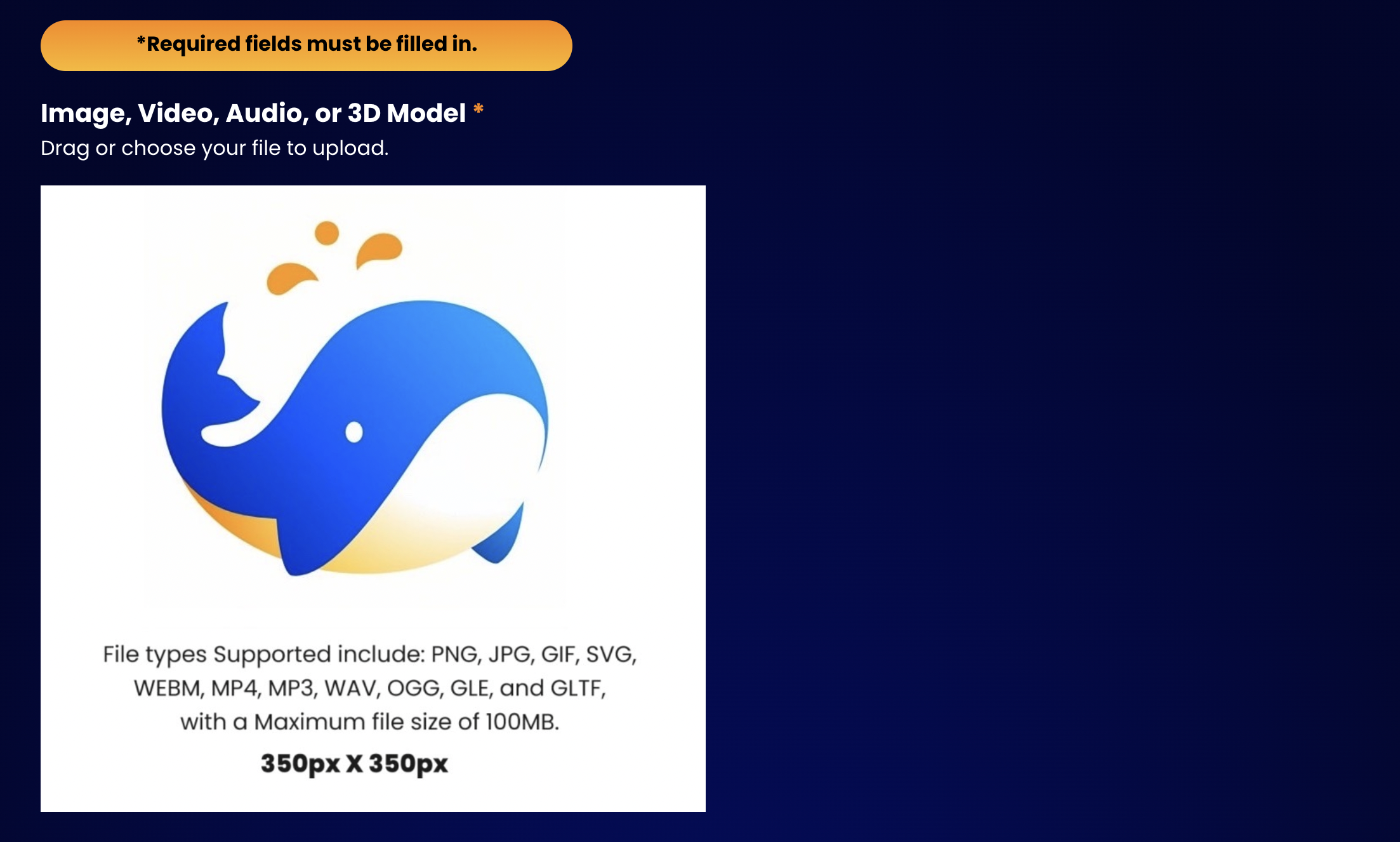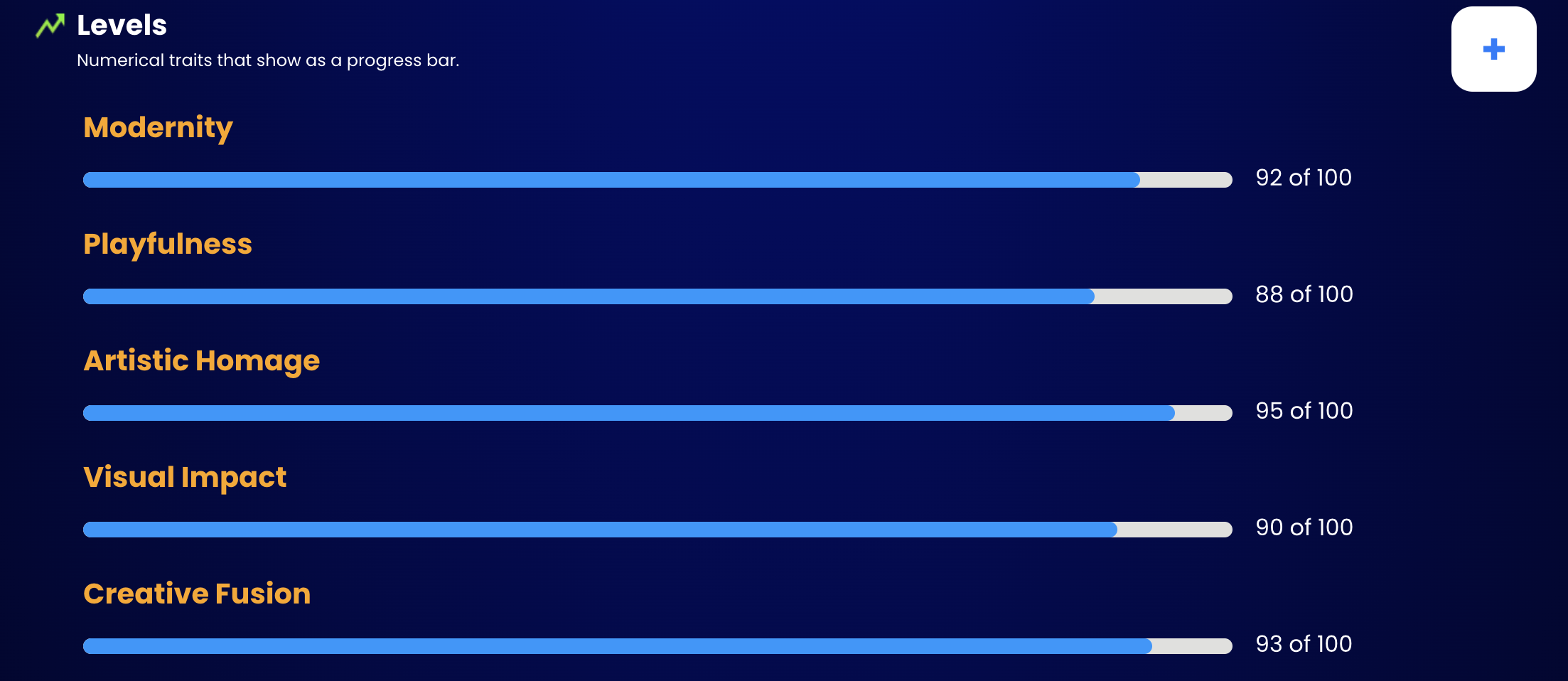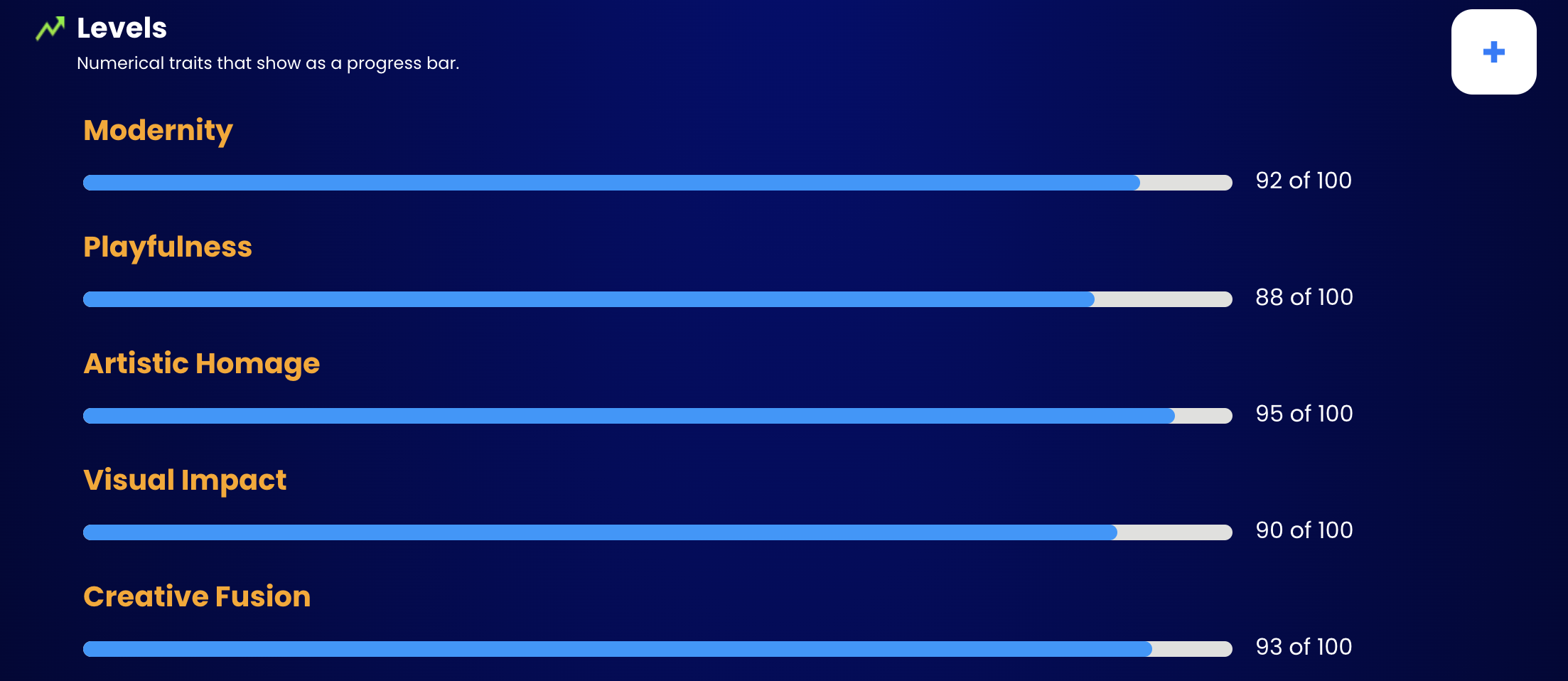Create Single NFTs
Create Single NFTs
A single NFT is a unique digital asset that represents ownership of a specific digital item or piece of content. Single NFTs can represent a wide range of digital assets, including but not limited to digital art, music, videos, virtual reality experiences, in-game items, and more.
Here is a list of properties of setting a fixed price for NFT:
This attribute pertains to the core content of the NFT, encompassing its visual, auditory, or 3D elements. This content can take the form of an image (e.g., PNG, JPG), video (e.g., MP4, WEBM), audio (e.g., MP3, WAV), or even a 3D model (e.g., GLB, GLTF), with a maximum file size of 100MB.

The NFT's name is chosen by the creator and serves as a unique identifier for the NFT. It can be any combination of letters, numbers, and symbols that is unique and meets the platform's requirements.

Categories are used to classify and categorize NFTs based on their theme, subject matter, or use case. For example, an NFT can belong to categories like Arts, Games, Sports, or Music & SFX. This helps users find NFTs that match their interests.

External links are URLs that provide additional information or context about the NFT. They can link to websites with more details about the NFT, the artist, or even online marketplaces where the NFT can be bought or sold. These links enhance the overall user experience.

The description provides more information about the NFT. It may include details such as the NFT's title, artist or creator, date of creation, and any other relevant information. Markdown syntax can be used to format the description.

The collection is the group or set where the NFT is organized and displayed. It helps in organizing NFTs based on common themes or properties. Creators can group their NFTs into collections for easier discovery by users.

Properties are characteristics or attributes that make the NFT unique or distinguish it from other NFTs. These properties can be physical (e.g., color, size) or abstract (e.g., rarity, value). They provide additional context and information about the NFT.

Levels are numerical traits that can represent the rarity, value, or progression of an NFT. They are often displayed as progress bars and can be used in various contexts, such as indicating a card's rarity in a collectible card game or a character's level in a virtual world.

Stats are numerical values that provide information about the NFT. They can represent various attributes, such as the number of editions available, rarity, quality, popularity, or specific in-game attributes like attack power, speed, and more.

Unlockable content is additional digital content that can only be accessed by the owner of the NFT. It adds value to the NFT and can include exclusive items, files, or experiences that are revealed to the NFT owner upon purchase.

Unlockable content is additional digital content that can only be accessed by the owner of the NFT. It adds value to the NFT and can include exclusive items, files, or experiences that are revealed to the NFT owner upon purchase.

The supply refers to the total number of NFTs that can be created by the creator. It is usually a fixed number, and once all NFTs in the supply are minted, no more can be created. Supply can impact an NFT's rarity and value.

Royalties are fees collected by the creator when the NFT is resold by a user. These fees are deducted from the final sale price and provide ongoing compensation to the original creator whenever the NFT changes hands.

This property specifies the blockchain platform on which the NFTs are created and traded. For example, Ethereum is a popular blockchain for minting NFTs, but there are others like Polygon.

Freezing metadata involves permanently storing all of the NFT's content, including its name, media, description, properties, and more, in decentralized file storage. This ensures that the NFT's information is securely stored and can be accessed by others indefinitely.

